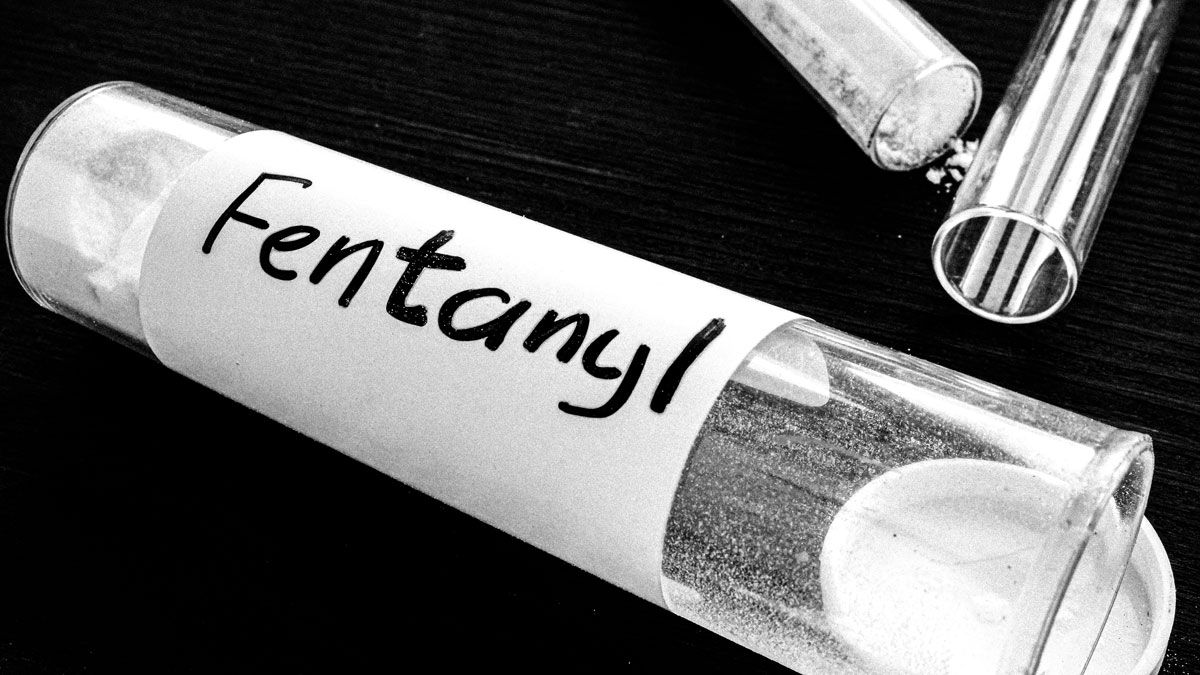At a time when more news headlines are related to fentanyl, it’s important for anyone taking it and their family members to be aware of the hidden dangers of fentanyl. Learning how to protect yourself or your loved ones and how to get the help you need to deal with this important issue is only a step away. In this article, we’ll help you understand what fentanyl is, discover the disturbing death rates linked with it, recognize symptoms of its use, identify overdose warnings, and find tools to keep yourself or your children safe.
Whether obtained by prescription or through illicit drug sales, fentanyl is contributing to a rising epidemic with devastating consequences. Recognizable symptoms of fentanyl use include altered physical appearance and behavioral changes. The alarming increase in fentanyl-related deaths, totaling 71,238 in 2021, poses a significant public health threat. Criminal networks exploit this crisis by producing counterfeit pills, 70% of which contain lethal doses of fentanyl. Overdose signs necessitate immediate action, emphasizing the crucial role of Narcan, a fast-acting opioid reversal agent. Withdrawal from fentanyl is challenging, underscoring the importance of comprehensive care. Hanley Foundation is dedicated to combating opioid misuse, offering evidence-based interventions, personalized programs, and ongoing support through its Safe Prescribing Initiative in Palm Beach County, Florida.
What is Fentanyl?
Fentanyl, a powerful opioid drug, is up to 100 times more potent than morphine or oxycodone. Drug dealers mix it with other chemicals and disguise it as phony oxycodone. These pills are known as “beans,” “green apples,” and “fake oxy.” Some people use fentanyl for pain management, especially when other drugs are inadequate, while others abuse it for recreational or sleep purposes. Fentanyl is far more potent than oxycodone and has a more significant impact when taken orally or by intravenous injection.
Symptoms of Fentanyl Use
Fentanyl use frequently manifests as noticeable bodily changes. These symptoms may include pinpoint pupils, lethargy, or drowsiness. Individuals under the influence may exhibit slurred speech, nodding off, or decreased coordination, symptoms similar to those seen with other opioids. The skin may appear pale, chilly, or clammy, and respiratory distress, as evidenced by delayed or shallow breathing, may be present. These observable markers are critical for spotting suspected fentanyl usage and prompting quick action or medical aid.
If you or a loved one need help, call our admissions team today at 855-809-4673.The Dangers of Fentanyl Use
The Centers for Disease Control and Prevention (CDC) reported 71,238 deaths in the United States due to fentanyl overdose in 2021. The dramatic increase in fentanyl-related mortality since 2013 is concerning, with nonpharmaceutical fentanyl accounting for the vast majority. Synthetic opioids, including fentanyl, are responsible for more than 150 overdose deaths every day. This situation is being exploited by criminal drug networks, which are making fake prescription tablets that closely resemble legal drugs, contributing to a hazardous epidemic in which 7 out of 10 seized counterfeit pills contain potentially lethal dosages of fentanyl.
Signs of Fentanyl Overdose
Excessive fentanyl use can result in poisoning, which appears as lethargy, trouble breathing, cold and clammy skin, and unresponsiveness. The most dangerous effect is respiratory failure, which can be fatal. The addictive nature of fentanyl is a concern, as long-term usage may lead to tolerance, requiring higher dosages to achieve the same effects, which can result in both psychological and physical dependence. Furthermore, when acquiring illicit drugs intentionally mislabeled as substances other than fentanyl, there is a possibility of unintended consumption of life-threatening doses.
The Need for Narcan
Naloxone, often known as Narcan, is a fast-acting medicine that can reverse the effects of opioids in as little as 2 to 3 minutes, restoring normal breathing. When provided promptly, it can prevent fatalities caused by fentanyl or other opioid overdose. Narcan is simple to administer and available in nasal spray or injectable versions, making it accessible to those with no medical knowledge. Because it has a limited duration of action, several administrations may be required. It is available without a prescription from local pharmacies in the majority of US states. In the event of an overdose, call 911, administer Narcan if it is available, keep the individual awake and breathing, lay them on their side to prevent choking, and remain with them until emergency help arrives.
What to Know About Fentanyl Withdrawal
Withdrawal symptoms from fentanyl include cravings, sweating, a runny nose, restless sleep, weakness, nausea, muscular spasms, and irritability. Mild withdrawal symptoms typically appear 12 to 30 hours after the last fentanyl usage, with the most severe effects fading within a few days. However, it may take several months to fully recover and feel normal after quitting fentanyl, illustrating the difficult nature of addiction recovery and the importance of comprehensive care during the withdrawal stage.
Getting Help for Fentanyl Use
Hanley is deeply committed to addressing opioid misuse across all age groups through evidence-based interventions, personalized programs, family engagement, and holistic plans for ongoing care. By tailoring treatments to individual needs, incorporating proven therapeutic approaches, involving families in the recovery process, and ensuring a continuum of care, Hanley aims to provide holistic support for individuals struggling with opioid misuse. This commitment reflects Hanley’s dedication to fostering lasting recovery and promoting overall well-being in those affected by opioid-related challenges.
Safe Prescribing Initiative
Hanley Foundation’s Safe Prescribing Initiative is dedicated to ensuring our children’s and community’s safety by promoting responsible prescribing practices in Palm Beach County. In 2021, Emergency Medical Services responded to 6,664 suspected overdoses in the county, with 47.4% related to opioids. By identifying risk factors such as mental health issues and early substance use, the initiative also emphasizes protective factors like community programs and resources for behavioral management. Following the CDC’s Framework for Program Evaluation, the initiative strives to base decisions on science, enhance social equity, provide effective services, focus on outcomes, and be accountable. The ultimate goal is to reduce opioid prescriptions per capita and safeguard the community from addiction.
Recovery Can’t Be Done Alone
Many people worry they cannot afford treatment. These fears can cause people to delay getting the help they desperately need. Luckily, health insurance may cover a portion of the cost of an opioid treatment program at Hanley Center in West Palm Beach. Insurance experts in admissions can assist with the pre-certification process, showing you what healthcare options are available. You are not alone. Admission specialists are here to guide patients and their families through all funding options for treatment. Start your journey to freedom and fulfillment by calling 844-211-4411 today.



